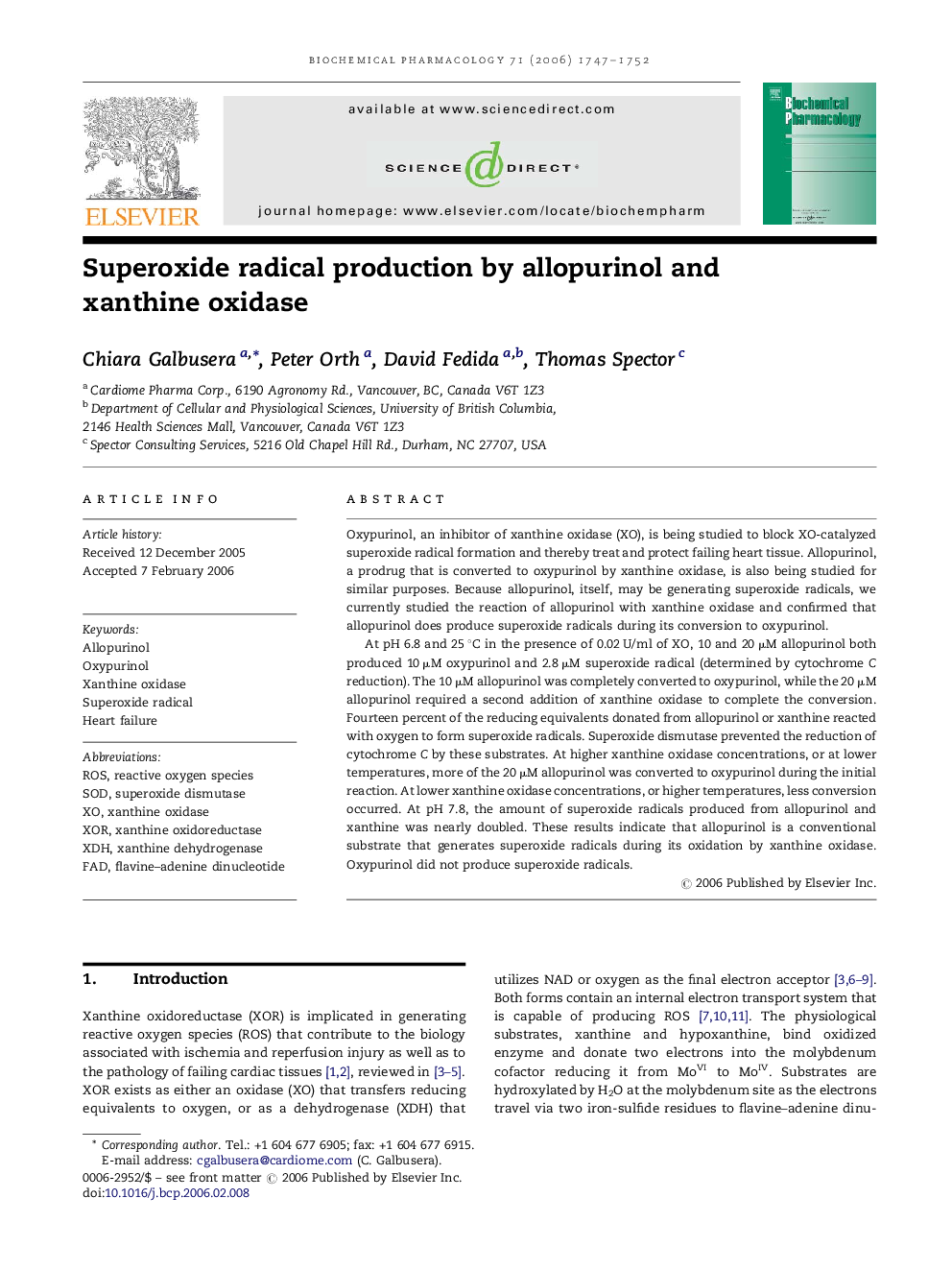| کد مقاله | کد نشریه | سال انتشار | مقاله انگلیسی | نسخه تمام متن |
|---|---|---|---|---|
| 2515199 | 1118505 | 2006 | 6 صفحه PDF | دانلود رایگان |

Oxypurinol, an inhibitor of xanthine oxidase (XO), is being studied to block XO-catalyzed superoxide radical formation and thereby treat and protect failing heart tissue. Allopurinol, a prodrug that is converted to oxypurinol by xanthine oxidase, is also being studied for similar purposes. Because allopurinol, itself, may be generating superoxide radicals, we currently studied the reaction of allopurinol with xanthine oxidase and confirmed that allopurinol does produce superoxide radicals during its conversion to oxypurinol.At pH 6.8 and 25 °C in the presence of 0.02 U/ml of XO, 10 and 20 μM allopurinol both produced 10 μM oxypurinol and 2.8 μM superoxide radical (determined by cytochrome C reduction). The 10 μM allopurinol was completely converted to oxypurinol, while the 20 μM allopurinol required a second addition of xanthine oxidase to complete the conversion. Fourteen percent of the reducing equivalents donated from allopurinol or xanthine reacted with oxygen to form superoxide radicals. Superoxide dismutase prevented the reduction of cytochrome C by these substrates. At higher xanthine oxidase concentrations, or at lower temperatures, more of the 20 μM allopurinol was converted to oxypurinol during the initial reaction. At lower xanthine oxidase concentrations, or higher temperatures, less conversion occurred. At pH 7.8, the amount of superoxide radicals produced from allopurinol and xanthine was nearly doubled. These results indicate that allopurinol is a conventional substrate that generates superoxide radicals during its oxidation by xanthine oxidase. Oxypurinol did not produce superoxide radicals.
Journal: Biochemical Pharmacology - Volume 71, Issue 12, 14 June 2006, Pages 1747–1752